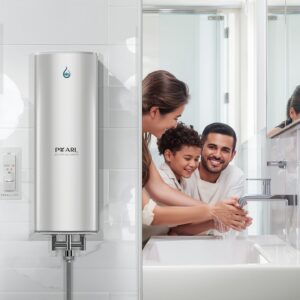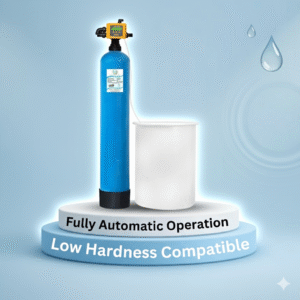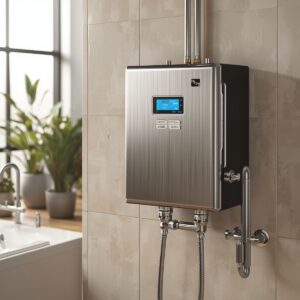TDS Meter: Your Pocket-Sized Water Quality Checker in 2025
Introduction
Ever wondered what is really in your drinking water? That clear-looking glass could be hiding dissolved salts, heavy metals, or even industrial chemicals. And while it may taste fine, is it really safe? That’s where a TDS Meter comes in — your tiny water detective that gives instant answers. We are diving deep into what a TDS Meter is, how it works, why you need one in 2025, and how to use it the right way. Whether you’re managing an RO system at home or running a water treatment plant, knowing your TDS is a game-changer.
💧 What is TDS? Total Dissolved Solids (TDS) Explained -TDS stands for Total Dissolved Solids – all the organic and inorganic stuff dissolved in water, including minerals, salts, and metals. These can come from natural sources or industrial runoff.
What Makes Up TDS?
Calcium
Magnesium
Sodium
Chloride
Sulfates
Heavy metals (lead, arsenic)
Organic matter
🔍 What is a TDS Meter?
A TDS Meter is a small handheld device that tells you how many dissolved solids are in your water usually measured in parts per million . It’s super easy to use – dip it in water and within seconds you get a reading.
⚙️ How Does a TDS Meter Work?
TDS meters work on the principle of electrical conductivity. The more dissolved ions (charged particles) in your water, the better it conducts electricity.
Here’s what happens inside:
Two electrodes dip into the water.
They pass a small current between them.
The resistance is measured and converted into TDS value .
📊 Ideal TDS Levels for Drinking Water
According to BIS (Bureau of Indian Standards) and WHO (World Health Organization), these are the ideal ranges:
TDS Level (ppm)
Water Quality
0 – 50
Deionized/Pure – Not suitable for drinking
50 – 150
Excellent
150 – 300
Good
300 – 500
Fair
500 – 1000
Poor – Not ideal
Above 1000
Unsafe for consumption
🏠 Why Should Every Home Have a TDS Meter in 2025?
1. RO System Check
Using an RO system? A TDS meter helps ensure your purifier is working properly and filtering water effectively.
2. Health & Safety
High TDS can mean high levels of harmful metals. Low TDS might lack essential minerals. A TDS meter helps you strike the right balance.
3. Taste & Cooking
Too much TDS can make water taste salty or bitter and affect the taste of food and beverages.
4. Cost Saver
It helps avoid over-servicing your RO system. Why change filters if your TDS levels are fine?
🔧 How to Use a TDS Meter (Step-by-Step)
Step 1: Turn on the TDS meter.
Step 2: Remove the cap and dip the sensor into a glass of water.
Step 3: Wait for the reading to stabilize (usually a few seconds).
Step 4: Record the value.
Step 5: Turn it off and clean the sensor.
✅ Pro Tip: Always test at room temperature. Avoid hot water as it may damage the meter or give inaccurate readings.
🧪 Where Can You Use a TDS Meter?
Home Drinking Water
Aquariums
Swimming Pools
Industrial RO Plants
Hydroponics & Gardening
Water Softeners
Bottled Water Testing
🛠️ TDS Meter Maintenance Tips
Always dry the probe after use.
Store in a cool, dry place.
Adjust periodically (every 3–6 months).
Avoid exposure to extreme heat or chemicals.
🛒 Where to Buy a TDS Meter?
You can easily order a high-quality TDS meter from Pearl Water Technologies at the toll-free number:
📞 (+91) 9582215137
Or visit: http://www.pearlwater.in
🌍 Future of Water Testing: Smart TDS Meters in 2025
In 2025, many homes and commercial setups are switching to smart TDS meters that:
Connect to smartphones
Send alerts for filter change
Track TDS trends over time
Pearl Water Technologies is already offering smart solutions in this space!
🔚 Conclusion
Water is life, and knowing what’s in your water is non-negotiable in today’s world. A TDS meter is like a fitness tracker for your water — quick, reliable, and essential.Remember, the goal isn’t just clean water, it’s balanced water — with the right minerals and none of the harmful stuff. So go ahead, grab a TDS meter, check your water, and stay informed. Because when it comes to health, what you don’t know can hurt you.
❓ FAQs
1. Is a TDS Meter Safe for Drinking Water Testing?
Yes, it is perfectly safe and designed specifically for that purpose.
2. Can TDS Meters Detect Bacteria?
No. TDS meters cannot detect biological soil like bacteria or viruses.
3. How Often Should I Use My TDS Meter?
Once a week is ideal, especially if you use a water purifier or RO system.
4. What’s the Best TDS Level for Drinking Water? Between 100-300 ppm is considered ideal for health and taste.
5. Can I Use a TDS Meter for Bottled Water? Absolutely! In fact, it’s a great way to verify the quality of the bottled water you’re buying.


